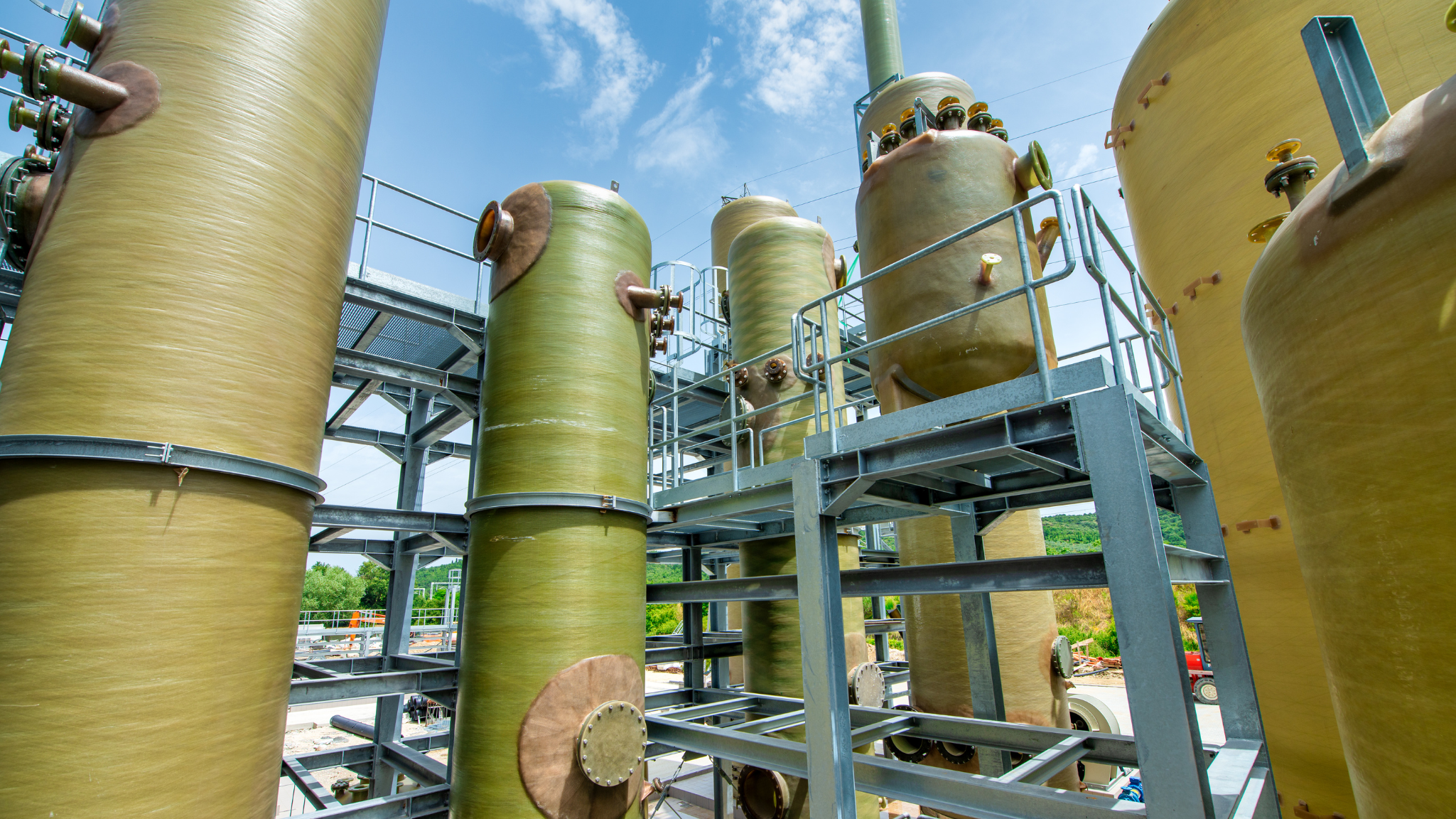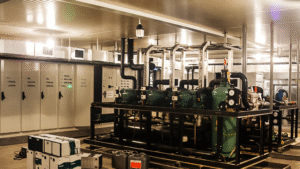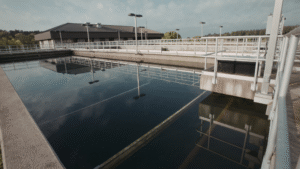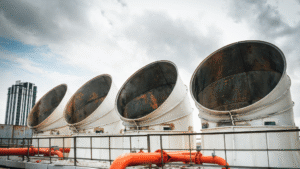In the chemical industry, it is easy to assume that chemical blending, chemical mixing, and chemical manufacturing are interchangeable terms. In reality, each process is distinct, and understanding the main difference is essential for anyone working with water treatment, cleaning products, or other industrial chemicals. Chemical blending, in particular, plays a vital role in ensuring consistency, safety, and efficiency across many industries.
Unlike manufacturing, which produces new chemical substances through reactions, or mixing, which simply combines raw materials without permanence, chemical blending involves combining ingredients into precise formulations that remain stable in the final product. For facilities in Pennsylvania, Ohio, and beyond, knowing how chemical blending fits within the larger industrial process can mean the difference between improved product quality and costly system failures.
The Main Difference Between Blending, Mixing, and Manufacturing
When discussing chemical production, the terms blending, mixing, and manufacturing often surface together, yet each represents a different industrial process with unique outcomes. The main difference lies in whether a chemical reaction takes place and how the materials are transformed.
Chemical Mixing
Chemical mixing is the simplest approach. It involves combining raw materials or substances to form a temporary mixture. A salad with lettuce, tomatoes, and croutons is a simple example. The ingredients can be separated again because no permanent change occurs. In industry, the mixing process may be used when dry ingredients or liquid substances are temporarily combined during packaging or processing. However, this approach does not guarantee long-term stability.
Chemical Blending
Chemical blending goes a step further. The blending process involves combining substances into precise formulations so the final product has new, lasting properties. Unlike a simple mixture, the blended composition cannot be separated into the original raw ingredients. For instance, blending olive oil, beeswax, lemon essential oil, and white vinegar produces timber wax with a completely different consistency and function. In water treatment and other applications, blending chemicals ensures consistency, safety, and improved product quality.
Chemical Manufacturing
Chemical manufacturing is the most complex process. Unlike blending, chemical manufacturing involves a chemical reaction that produces more industrial chemicals. Examples include soap created through the saponification process with sodium hydroxide, or acrylic polymers formed through polymerization. In these cases, the raw materials are permanently altered to create new chemical substances, not just reformulated.
Understanding these distinctions is critical. While mixing is useful for temporary combinations, and manufacturing creates entirely new products, chemical blending strikes a balance by delivering stability, cost savings, and consistent performance in many industries.
Comparing Chemical Mixing, Blending, and Manufacturing
| Process | Chemical Reaction? | Industrial Characteristics | Water Treatment Example |
|---|---|---|---|
| Chemical Mixing | No | Temporary combination of raw ingredients; not stable; can be separated | Mixing dry powders or liquid additives during packaging without long-term stability |
| Chemical Blending | No | Precise formulations; stable, consistent; cannot be separated once blended | Blending corrosion inhibitors, scale preventatives, and biocides for cooling tower treatment |
| Chemical Manufacturing | Yes | Raw materials permanently transformed into new chemical substances | Producing soap via saponification with sodium hydroxide, or creating acrylic polymers through polymerization |
Why Chemical Blending Matters in Industrial Water Treatment
Water treatment is one of the most important applications of chemical blending. Industrial facilities in many industries rely on precise formulations to keep systems running efficiently, reduce safety risks, and comply with regulatory requirements. Unlike simple mixing or full-scale manufacturing, industrial chemical blending provides the balance needed for performance and reliability.
Precision for Facility Performance
In cooling towers, boilers, and wastewater plants, even small errors in chemical compositions can lead to corrosion, scaling, or biological growth. Chemical blending involves combining different chemicals into exact ratios using specialized equipment such as powder blenders or liquid systems. This precision ensures that the final product delivers consistent results, avoids incompatible chemicals, and improves product quality.
Cost Savings and Efficiency
For facility operators, poor chemical formulations can be both time consuming and expensive. Redoing a blend wastes raw materials and increases downtime. By working with toll blending services or custom formulations, companies achieve cost savings while reducing the risk of system damage. Chemical blending allows water treatment specialists to meet fluctuating demand without compromising quality.
Regulatory Compliance and Safety
The blending process is also essential for meeting industry regulatory compliance standards. Whether controlling Legionella bacteria in cooling towers or ensuring wastewater is safe for discharge, blending chemicals into precise formulations ensures both safety and adherence to strict regulatory requirements. This protects equipment, employees, and surrounding communities.
In water treatment, chemical blending is more than just combining substances. It is a controlled industrial process that gives operators a competitive edge by improving reliability, supporting environmental responsibility, and ensuring the long-term success of facility operations.
Also read: Regulatory Compliance in Water Treatment Chemical Formulation
Common Industrial Examples of Chemical Blending
Chemical blending is central to many industries, especially where precise formulations determine efficiency, safety, and compliance. Unlike temporary mixing or full-scale chemical manufacturing, the blending process ensures consistency in the final product and reliability across different applications.
Here are some of the most common industrial applications of chemical blending:
- Water and Wastewater Treatment
Blended corrosion inhibitors, scale preventatives, and disinfectants are essential for cooling towers, boilers, and wastewater plants. Industrial chemical blending ensures that chemicals together deliver stable, reliable results while protecting equipment and meeting regulatory compliance. - Food and Beverage Industry
The food industry relies on blending raw ingredients to produce stable, safe commercial products. A simple example is timber wax, made by blending olive oil, beeswax, lemon essential oil, and white vinegar. On an industrial scale, this approach is used for powdered detergents, cleaning products, and food-safe blends that must remain consistent and effective. - Cleaning and Sanitation Products
From detergents to disinfectants, chemical blending supports the production of high-performance cleaning products. These formulations must remain stable over time while being safe to use in industrial and commercial environments. - Automotive and Specialty Chemicals
Coolants, lubricants, degreasers, and other specialty chemicals depend on precision blending to achieve the right chemical compositions. Toll blending services allow manufacturers to protect trade secrets and intellectual property while delivering finished products efficiently.
These examples highlight how many chemical blends serve as the backbone of industrial operations, improving product quality and ensuring safe, consistent performance.
Chemical Manufacturing: How It Differs from Blending
While chemical blending focuses on combining substances into stable, precise formulations, chemical manufacturing represents a fundamentally different industrial process. The main difference is that chemical manufacturing always involves a chemical reaction, producing entirely new chemical substances rather than simply reformulating existing ones.
How Chemical Manufacturing Works
In chemical manufacturing, raw materials are transformed into more industrial chemicals through processes such as:
- Solvent extraction and steam distillation – used to produce essential oils and other specialty products.
- Polymerization – creating acrylic polymers for coatings, adhesives, and plastics.
- Saponification process – using sodium hydroxide to react with fats or oils to make soap.
Each of these methods permanently alters the chemical compositions of the raw ingredients, creating new products that cannot be separated back into their original forms. This differs from the blending process, where the goal is to achieve consistency, stability, and functionality without changing the underlying chemical structures.
Implications for Industrial Facilities
- Higher investment: Chemical manufacturing often requires large-scale infrastructure and specialized facilities.
- Regulatory oversight: Manufacturing is tightly controlled by regulatory requirements due to the risks of creating new substances.
- Less flexibility: Scaling production to meet fluctuating demand is more difficult compared to toll blending services.
- Supply chain considerations: Chemical contract manufacturing may help bridge gaps, but manufacturing is generally less agile than blending.
Complementary Roles
Blending and manufacturing complement each other in the chemical industry. Manufacturing produces the raw materials and advanced compounds, while blending ensures facilities can achieve precise results, cost savings, and consistency with those materials.
Why the Difference Matters for Facilities
For industrial operators and engineers, understanding the main difference between blending, mixing, and manufacturing is more than a technical detail. The choice of process directly affects efficiency, cost, and long-term reliability in water treatment and other applications.
Risks of Confusing the Processes
- Incompatible chemicals: Using the wrong combination can damage equipment or reduce effectiveness.
- Wasted resources: A failed formulation wastes raw materials and is time consuming to correct.
- Safety hazards: Poorly executed blends may increase flammability or create unstable results.
Benefits of Proper Chemical Blending
- Cost savings: Stable blends reduce downtime and material loss.
- Improved product quality: Precise formulations ensure consistent results and reliable performance.
- Regulatory compliance: Properly blended chemical products help facilities meet regulatory requirements for safety and environmental responsibility.
- Competitive edge: Blending provides flexibility in custom formulations, giving facilities the ability to adapt quickly to specific needs.
Beyond the Chemistry
Choosing blending over full-scale manufacturing also reduces reliance on heavy infrastructure while still achieving chemicals results that meet operational goals. Protecting trade secrets and intellectual property is easier with toll blending partnerships, allowing facilities to maintain control of their unique chemical compositions while still producing a high-quality final product.
ETI’s Role in Industrial Chemical Blending
For more than three decades, ETI has specialized in advanced water treatment chemical blending that delivers precise, reliable, and application-specific results. Unlike general suppliers who focus on off-the-shelf products, ETI emphasizes custom blending services backed by rigorous quality systems and long-term partnerships with distributors and operators.
The Custom Formulation Advantage
ETI’s blending process is designed to meet unique system requirements:
- Optimized performance for specific water chemistry and metallurgy
- Cost savings through efficient, targeted formulations
- Simplified treatment by consolidating multiple functions into a single blend
- Reduced chemical usage with precise formulations that improve product quality
- Streamlined supply chain by replacing multiple products with fewer, more effective solutions
Commitment to Quality and Safety
ETI operates under an ISO 9001-certified quality management system. This ensures:
- Standardized development and repeatable results
- Traceability of raw materials to finished product
- Comprehensive quality testing during every stage of the process
- Continuous improvement to meet evolving industry demands
A True Partner, Not a Competitor
Founded in 1986, ETI was built to support independent water treatment service companies rather than compete with them. Through toll blending services, custom formulations, and technical training programs like ETI Bootcamp and CWT Certification, ETI partners with professionals across Pennsylvania and Ohio to strengthen local presence and achieve long-term success.
Ready to see how ETI’s custom blending solutions can help your facility? Contact us today to discuss your specific water treatment needs.
Frequently Asked Questions (FAQs)
What are examples of chemical manufacturing processes?
Chemical manufacturing involves a chemical reaction that transforms raw ingredients into entirely new substances. Examples include solvent extraction and steam distillation for essential oils, polymerization to produce acrylic polymers, and the saponification process using sodium hydroxide to create soap. These methods generate more industrial chemicals that cannot be separated back into their original materials.
How does the food industry use chemical blending?
The food industry relies on the blending process to combine raw ingredients into safe, consistent formulations. On a small scale, blending olive oil, beeswax, lemon essential oil, and white vinegar creates timber wax. On a commercial scale, blending supports the production of stable products such as powdered detergents and cleaning products used in food processing environments.
What risks exist with blending incompatible chemicals?
Blending incompatible chemicals can compromise safety, performance, and regulatory compliance. Poor formulations may result in unstable mixtures, hazardous reactions, or reduced product quality. This makes precise formulations and specialized equipment essential in industrial chemical blending.
How does toll blending help with fluctuating demand?
Toll blending services allow companies to respond to fluctuating demand by outsourcing custom formulations. This approach reduces costs, protects intellectual property and trade secrets, and strengthens the supply chain while ensuring high-quality finished products.





